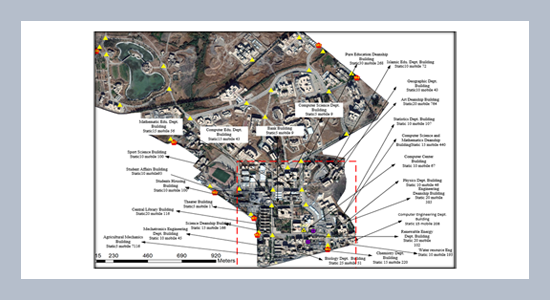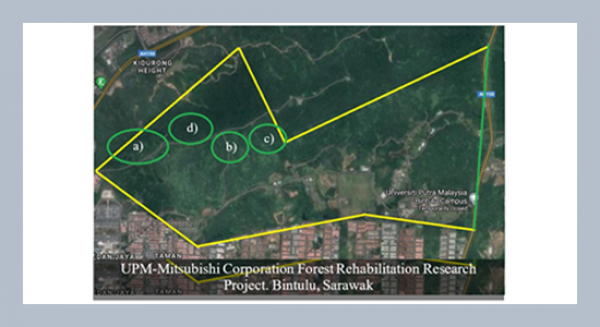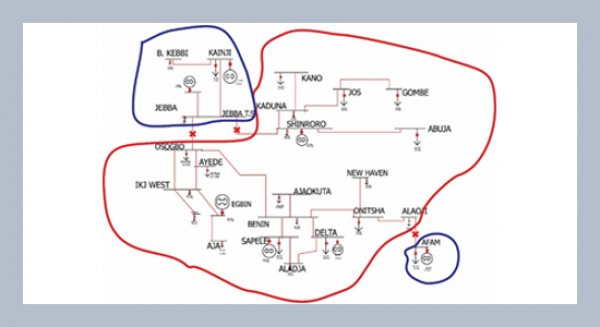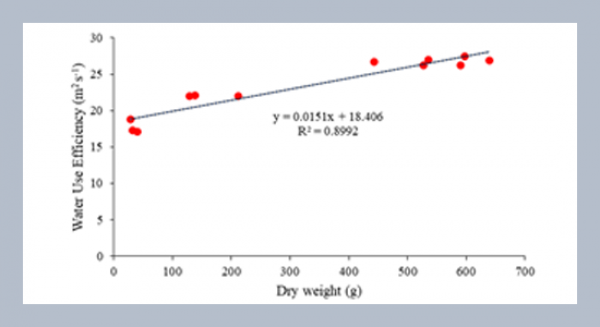REFERENCES
- Abuarqoub, A., Abusaimeh, H., Hammoudeh, M., Uliyan, D., Abu-Hashem, M.A., Murad, S., Al-Fayez, F. 2017. A survey on internet of things enabled smart campus applications. Proceedings of the International Conference on Future Networks and Distributed Systems, 1–7.
- Abukhalaf, A.H.I., Von Meding, J. 2020. Communication challenges in campus emergency planning: The case of hurricane Dorian in Florida. Natural Hazards, 104(2), 1535–1565.
- Alramli, T., Mahmood, B., Kadhim, D., 2020, April. Network-based model for dissemination of advertising. In 2020 International Conference on Computer Science and Software Engineering, pp. 226–231.
- Anggoro, S., Hia, A.K., Waruwu, N., Winarno, A., Hermana, D. 2024. Managing green culture for environmental performance in smart campus transformation. International Journal of Leadership in Education, 1–19.
- Apiratwarakul, K., Cheung, L.W., Pearkao, C., Gaysonsiri, D., Ienghong, K. 2024. “Smart emergency call point” enhancing emergency medical services on university campuses. Prehospital and Disaster Medicine, 39(1), 32–36.
- Attard, M., Guzman, L.A., Oviedo, D. 2023. Urban space distribution: The case for a more equitable mobility system. Case Studies on Transport Policy, 14, 101096.
- Babatunde, G.A., Theophilus, E., Sunday, O. Joseph., David, A.K., Ayodele, O.G. 2024. Development of a GSM-RC automated device for measuring mobile communication signal strength and meteorological parameters. Advances in Science, Technology and Engineering Systems Journal, 9(1), 149–164.
- Barroso, S., Bustos, P., Núñez, P. 2023. Towards a cyber-physical system for sustainable and smart building: A use case for optimizing water consumption on a smart campus. Journal of Ambient Intelligence and Humanized Computing, 14(5), 6379–6399.
- Basnayake, V., Mabed, H., Canalda, P., Jayakody, D.N. 2023. Continuous and responsive D2D victim localization for post-disaster emergencies. IEEE Transactions on Mobile Computing, 1–16.
- Bean, H., Grevstad, N., 2023. Wireless emergency alerts: Public understanding, trust, and preferences following the 2021 US nationwide test. Journal of Contingencies and Crisis Management, 31(2), 273–288.
- Blazevic, M., Riehle, D.M. 2023. University of Things: Opportunities and challenges for a smart campus environment based on IoT sensors and business processes. Proceedings of the 8th International Conference on Internet of Things, Big Data and Security, 105–114.
- Brewer Jr, B.D. 2021. Identifying and Categorizing the strategies higher education emergency managers used to implement emergency notification systems: A qualitative study. (Doctoral dissertation). Colorado Technical University.
- Dankan Gowda, V., Prasad, K., Shekhar, R., Srinivas, R., Srinivas, K.N., Lakineni, P.K. 2023. Development of a real-time location monitoring app with emergency alert features for Android devices. 2023. 4th IEEE Global Conference for Advancement in Technology, 1–6.
- Dong, Z.Y., Zhang, Y., Yip, C., Swift, S., Beswick, K. 2020. Smart campus: Definition, framework, technologies, and services. IET Smart Cities, 2(1), 43–54.
- Falcao, D., Salles, R., Maranhao, P., 2021. Performance evaluation of disruption tolerant networks on warships' tactical messages for secure transmissions. Journal of Communications and Networks, 23(6),.473–487.
- Gao, J., Li, P., Laghari, A.A., Srivastava, G., Gadekallu, T.R., Abbas, S., Zhang, J., 2024. Incomplete multiview clustering via semidiscrete optimal transport for multimedia data mining in IoT. ACM Transactions on Multimedia Computing, Communications and Applications, 20(6), 1–20.
- Gao, J., Liu, M., Li, P., Laghari, A.A., Javed, A.R., Victor, N., Gadekallu, T.R., 2023. Deep incomplete multi-view clustering via information bottleneck for pattern mining of data in extreme-environment IoT. IEEE Internet of Things Journal. 11, 26700–26712.
- Hasan, S., Sharifi Sani, M., Iranmanesh, S., Al-Bayatti, A.H., Khan, S., Raad, R., 2023. Enhanced message replication technique for DTN routing protocols. Sensors, 23(2), 922.
- Henrique, L.F., Silva, W.N., Silva, C.C.A., Dias, B.H., Oliveira, L.W., Almeida, M.C. 2023. Optimal siting and sizing of distributed energy resources in a smart campus. Electric Power Systems Research, 217, 109095.
- Jiang, Y., Yin, S., 2023. Heterogenous-view occluded expression data recognition based on cycle-consistent adversarial network and K-SVD dictionary learning under intelligent cooperative robot environment. Computer Science and Information Systems, 20(4),.1869–1883.
- Krishnakumar, V., Asokan, R. 2023. An energy efficient and QoS routing protocol for MANET realized over multi-objective red deer algorithm (RD-MOCER) in support of emergency disaster management. International Journal of Communication Systems, 36(1), e5349.
- Laghari, A.A., Estrela, V.V., Li, H., Shoulin, Y., Khan, A.A., Anwar, M.S., Wahab, A., Bouraqia, K., 2024. Quality of experience assessment in virtual/augmented reality serious games for healthcare: A systematic literature review. Technology and Disability, 36, 17–28.
- Laghari, A.A., Khan, A.A., Alkanhel, R., Elmannai, H. and Bourouis, S., 2023a. Lightweight-biov: Blockchain distributed ledger technology (bdlt) for internet of vehicles (iovs). Electronics, 12(3), 677.
- Laghari, A.A., Shahid, S., Yadav, R., Karim, S., Khan, A., Li, H., Shoulin, Y., 2023b. The state of art and review on video streaming. Journal of High Speed Networks, 29, 211–236.
- Lindgren, A., Doria, A., Schelen, O. 2004. Probabilistic routing in intermittently connected networks. International Workshop on Service Assurance with Partial and Intermittent Resources. Lecture Notes in Computer Science, 3126.
- Liu, Q., Wang, N. 2023. Research on modeling and evaluation of topology reliability of smart campus network based on cloud computing. International Conference on Multimedia Technology and Enhanced Learning, 1–13.
- Madhavrao, W.G., Rao, V.S. 2024. Effective emergency transportation and communication for saving human lives during disaster. In Handbook of Research on Artificial Intelligence and Soft Computing Techniques in Personalized Healthcare Services. Apple Academic Press, 401–425.
- Mahmood, B., 2021. Indicators on the feasibility of curfew on pandemics outbreaks in metropolitan/micropolitan cities. In 2021 IEEE International Conference on Communication, Networks and Satellite pp. 179–183.
- Mahmood, B., Tomasini, M., Menezes, R., 2015. Social-based forwarding of messages in sensor networks. In International Conference on Sensor Networks, pp. 85-90.
- Mahmood, B., Tomasini, M., Menezes, R., 2015. Estimating memory requirements in wireless sensor networks using social tie strengths. In 2015 IEEE 40th Local Computer Networks Conference Workshops, pp. 695–698.
- Min-Allah, N., Alrashed, S. 2020. Smart campus—A sketch. Sustainable Cities and Society, 59, 102231.
- Minoli, D. 2017. IoT applications to smart campuses and a case study. EAI Endorsed Transactions on Smart Cities. 2(5), 153483, e4-e4.
- Mowbray, F., Mills, F., Symons, C., Amlôt, R., James Rubin, G. 2023. A systematic review of the use of mobile alerting to inform the public about emergencies and the factors that influence the public response. Journal of Contingencies and Crisis Management, 32(1). e12499.
- Nasir, N.H., Lestari, F., Kadir, A. 2022. Android-based mobile panic button UI application design development in responding to emergency situations in Universitas Indonesia (UI). International Journal of Emergency Services, 11(3), 445–470.
- Pasetti, M., De Conno, B., Motta, M., Rinaldi, S. 2020. On the use of LoRaWAN for the monitoring and control of distributed energy resources in a smart campus. Applied Sciences, 10(1), 320.
- Polin, K., Yigitcanlar, T., Limb, MWashington, T. 2023. The making of smart campus: A review and conceptual framework. Buildings,13(4), 891.
- Putra, A.B., 2023. Implementation of enhanced spray routing protocol for VDTN on Surabaya smart city scenario. Jurnal RESTI (Rekayasa Sistem dan Teknologi Informasi), 7(4), 914–921.
- Roda-Sanchez, L., Cirillo, F., Solmaz, G., Jacobs, T., Garrido-Hidalgo, C., Olivares, T., Kovacs, E., 2023. Building a smart campus digital twin: System, analytics and lessons learned from a real-world project. IEEE Internet of Things Journal, 11(3), 4614 – 4627.
- Shah, P., Kasbe, T. 2021. A review on specification evaluation of broadcasting routing protocols in VANET. Computer Science Review, 41, 100418.
- Sivanathan, A., Sherratt, D., Gharakheili, H.H., Radford, A., Wijenayake, C., Vishwanath, A., Sivaraman, V. 2017. Characterizing and classifying IOT traffic in smart cities and campuses. 2017 IEEE Conference on Computer Communications Workshops, 559–564.
- Soomro, A.M., Naeem, A.B., Senapati, B., Bashir, K., Pradhan, S., Ghafoor, M.I., Sakr, H.A. 2023. In manet: An improved hybrid routing approach for disaster management. IEEE International Conference on Emerging Trends in Engineering, Sciences and Technology, 10138831.
- Spyropoulos, T., Psounis, K., Raghavendra, C.S. 2005. Spray and wait: An efficient routing scheme for intermittently connected mobile networks. In Proceedings of the 2005 ACM Special Interest Group on Data Communication SIGCOMM workshop on Delay-tolerant networking, pp. 252–259.
- Stute, M., Kohnhauser, F., Baumgartner, L., Almon, L., Hollick, M., Katzenbeisser, S., Freisleben, B. 2020. rescue: A resilient and secure device-to-device communication framework for emergencies. IEEE Transactions on Dependable and Secure Computing, 19(3), 1722–1734.
- Tomasini, M., Mahmood, B., Zambonelli, F., Brayner, A., Menezes, R., 2017. On the effect of human mobility to the design of metropolitan mobile opportunistic networks of sensors. Pervasive and Mobile Computing, 38, 215–232.
- Wang, T., Guomai, S., Zhang, L., Li, G., Li, Y., Chen, J. 2019. Earthquake emergency response framework on campus based on multi-source data monitoring. Journal of Cleaner Production, 238, 117965.
- Yin, S., Li, H., Laghari, A.A., Gadekallu, T.R., Sampedro, G.A., Almadhor, A., 2024. An anomaly detection model based on deep auto-encoder and capsule graph convolution via sparrow search algorithm in 6G internet-of-everything. IEEE Internet of Things Journal, 99, 1.
- Yin, S., Li, H., Sun, Y., Ibrar, M., Teng, L., 2024. Data visualization analysis based on explainable artificial intelligence: A survey. IJLAI Transactions on Science and Engineering, 2(3), 24–31.






